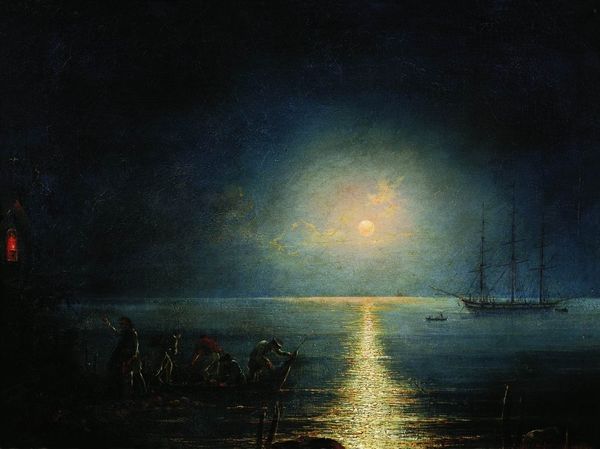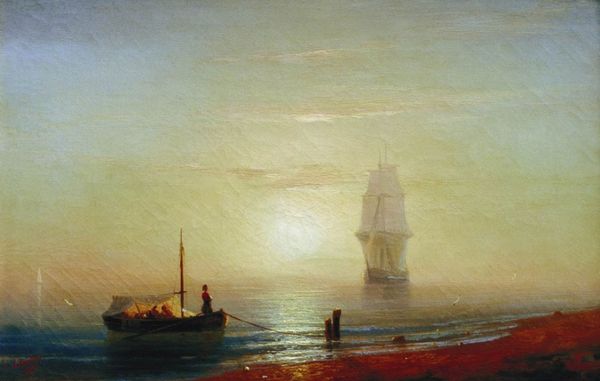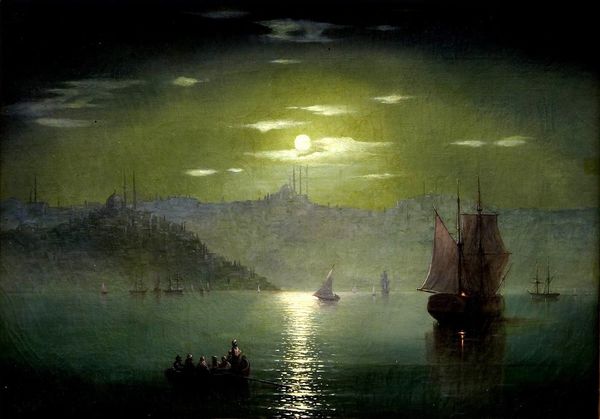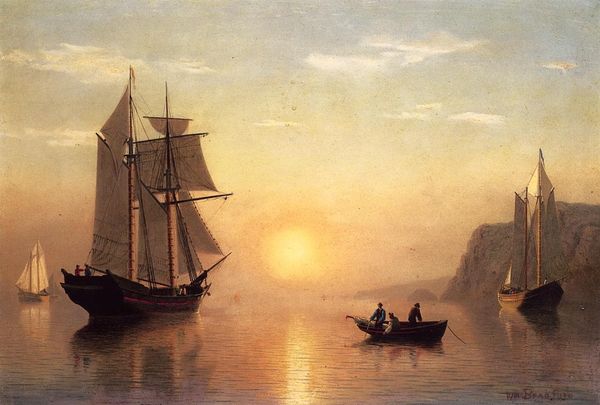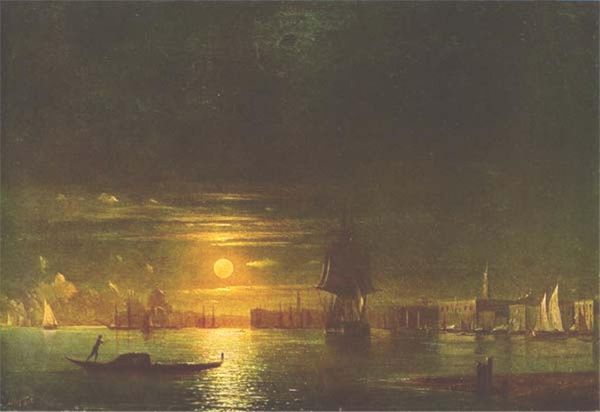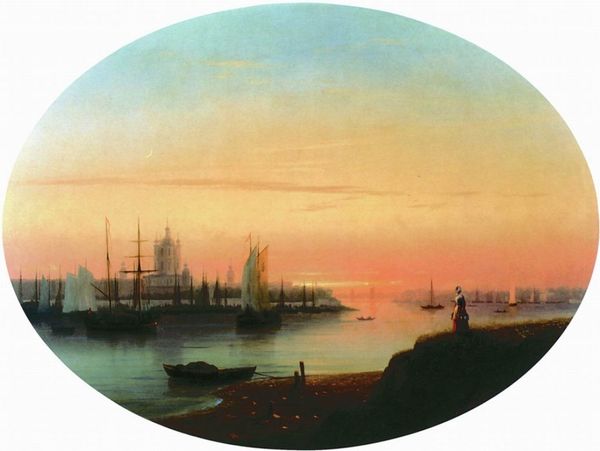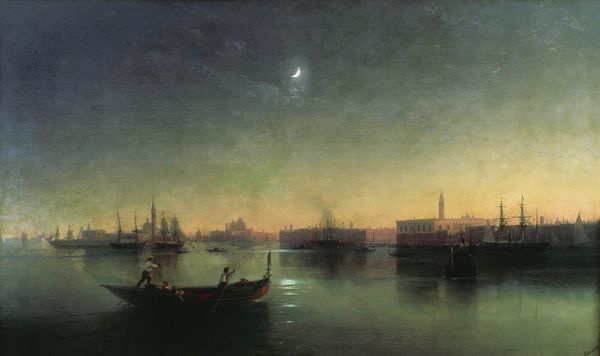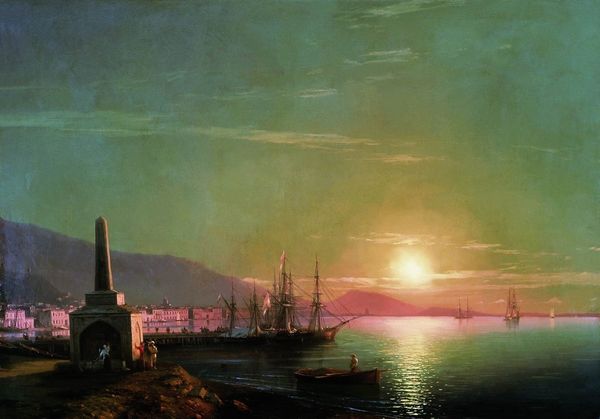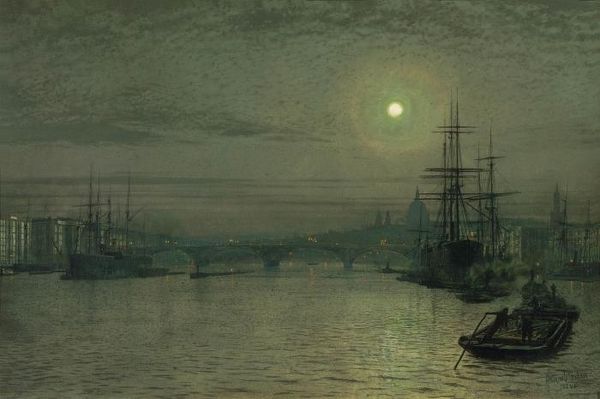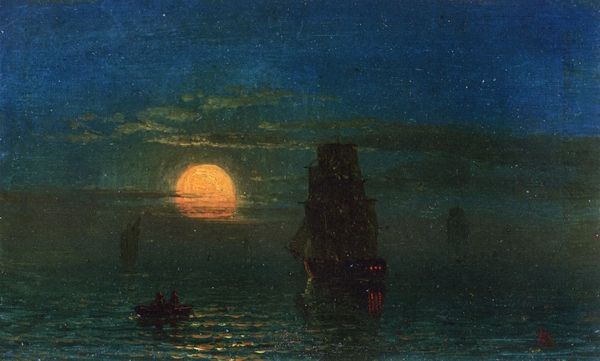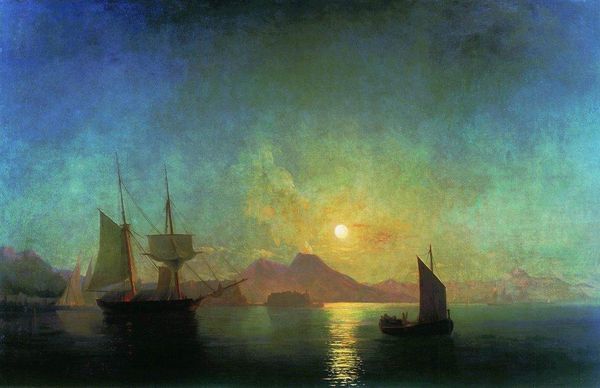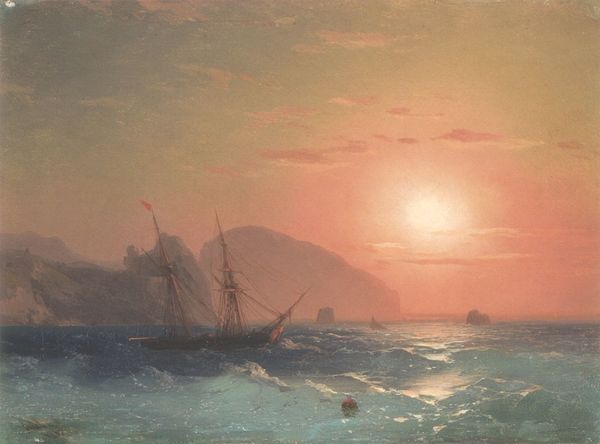
Copyright: Public domain
Editor: Here we have Aivazovsky's "Bosphorus in the Moonlight," painted in 1874. It's an oil painting, and the way the moonlight shimmers on the water is just magical. What can you tell me about it? Curator: Looking at this work, I'm immediately drawn to the artist’s technical skill, of course, but more interestingly, the social implications. The availability of oil paints enabled this level of detail and allowed for “plein air” production – but at what cost? Consider the ships: what resources were required to build and man them? How does Aivazovsky romanticize that, obscuring potential colonial or trade implications under a beautiful shimmer? Editor: That’s a perspective I hadn't considered. I was focused on the artistic technique, but you're making me think about the broader context. The people sitting near the water’s edge -- what about them? Curator: Exactly! Consider the relationship of labor to leisure. These figures appear at ease, but are they beneficiaries or victims of the economic activities implied by the harbor? How does their proximity to these large ships influence their economic wellbeing or access to power? And the moonlight, think about silver nitrate in the production process… Where did that come from, who mined it? Editor: Wow, that really reframes how I see the entire painting. It's not just a pretty picture; it's a snapshot of a specific time with all these intertwined social and material narratives. Curator: Precisely. By focusing on materials and means, we can unlock new dialogues surrounding these established works of art and uncover overlooked production histories that challenge how we view the pretty pictures, and ultimately the system of its patronage. Editor: I'll definitely look at art differently from now on. Thanks for expanding my view.
Comments
No comments
Be the first to comment and join the conversation on the ultimate creative platform.

